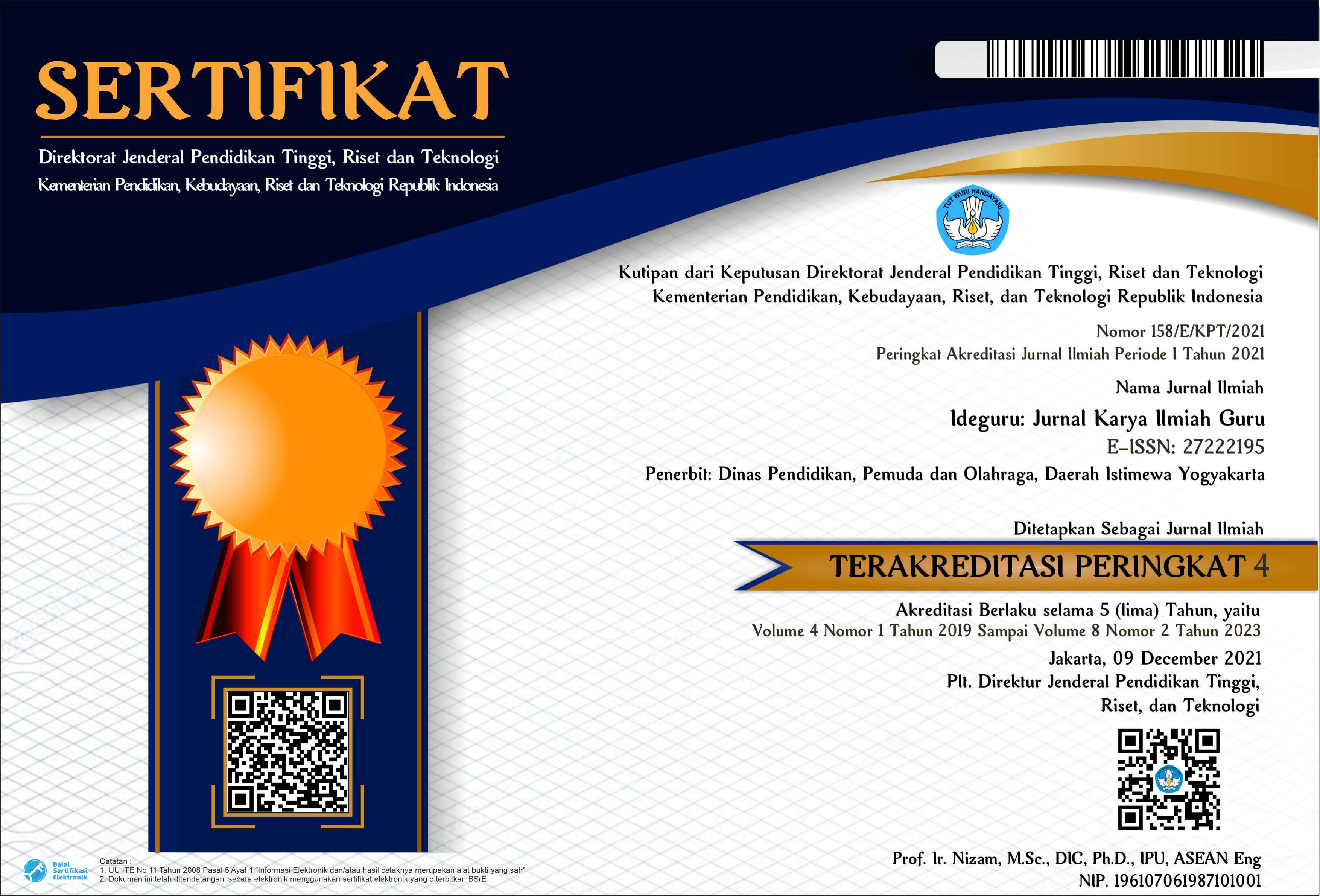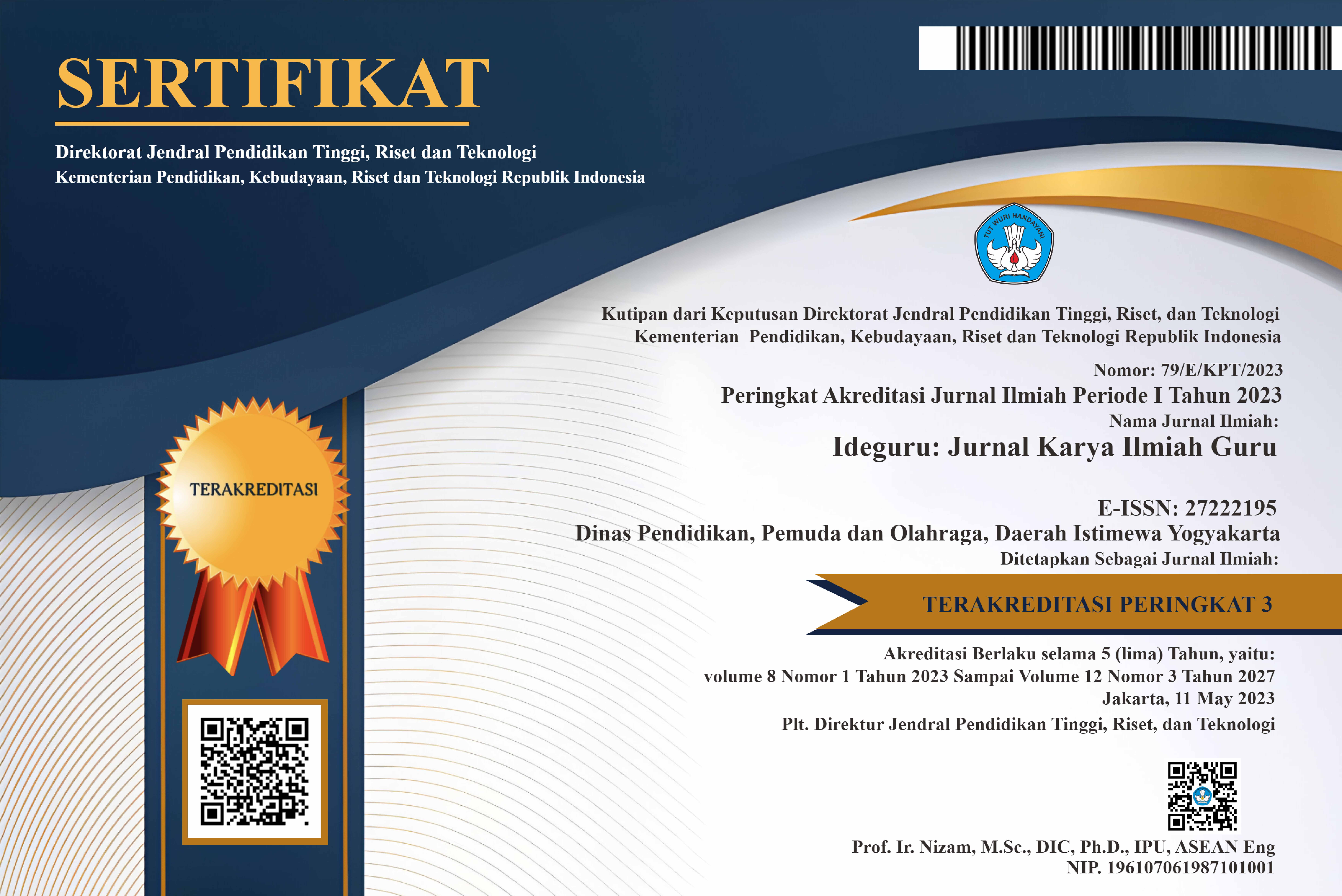Peningkatan Hasil Belajar Peserta Didik Menggunakan Model RADEC di Kelas IV Sekolah Dasar
Abstract
The study was prompted by concerns about the poor learning outcomes of Class IV students at SD Negeri 11 Marunggi in Pariaman City. The main problems identified were the educators' inadequate planning of Pancasila education learning, students' lack of engagement, limited reading skills, and insufficient learning resources. The research focused on educators and students in Class IV of elementary school. A mixed-method approach was employed, combining both qualitative and quantitative methods with a classroom action research design. The study was conducted over two cycles. The results revealed that: Firstly, there was a significant improvement in open module assessment, with an average score of 85.4% in cycle I and 95.8% in cycle II. Secondly, the implementation of learning by educators increased from an average score of 83.85% in cycle I to 92.8% in cycle II, while student engagement also improved from an average score of 82.1% in cycle I to 92.8% in cycle II. Thirdly, student learning outcomes showed a remarkable improvement, with an average score of 79.4% in cycle I and 92.6% in cycle II. In conclusion, the study suggests that the RADEC model can be an effective strategy for improving student learning outcomes in Pancasila education learning for Class IV students at SD Negeri 11 Marunggi, Pariaman City.
oblems identified were the educators' inadequate planning of Pancasila education learning, students' lack of engagement, limited reading skills, and insufficient learning resources. The research focused on educators and students in Class IV of elementary school. A mixed-method approach was employed, combining both qualitative and quantitative methods with a classroom action research design. The study was conducted over two cycles. The results revealed that: Firstly, there was a significant improvement in open module assessment, with an average score of 85.4% in cycle I and 95.8% in cycle II. Secondly, the implementation of learning by educators increased from an average score of 83.85% in cycle I to 92.8% in cycle II, while student engagement also improved from an average score of 82.1% in cycle I to 92.8% in cycle II. Thirdly, student learning outcomes showed a remarkable improvement, with an average score of 79.4% in cycle I and 92.6% in cycle II. In conclusion, the study suggests that the RADEC model can be an effective strategy for improving student learning outcomes in Pancasila education learning for Class IV students at SD Negeri 11 Marunggi, Pariaman City.
Keywords: Learning Outcomes, Pancasila Education, RADEC.
PDF Downloads
Copyright (c) 2024 Mustika Rani, Reinita Reinita

This work is licensed under a Creative Commons Attribution 4.0 International License.

 DOI:
DOI:














